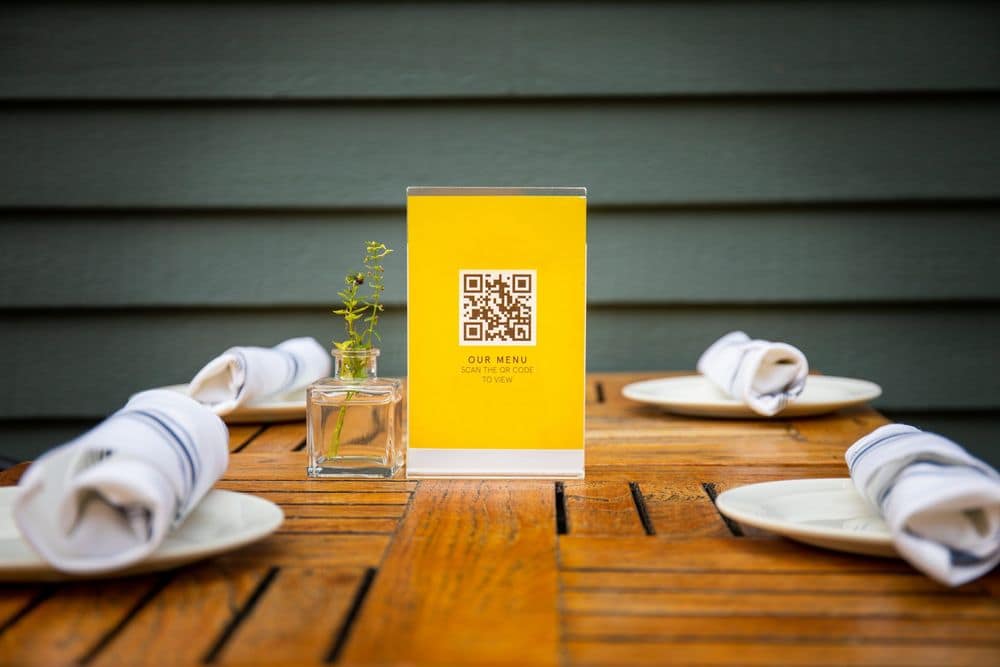A few years ago, QR codes seemed like all the rage, found on everything from soda bottles and consumer packaged goods to t-shirts and billboards. But, to many companies’ surprise, they fell flat and started to fade. Fast forward to 2020, and QR codes are making a comeback.
So, what gives? Let’s delve into the backstory and what the resurgence could ultimately mean for you.
The History of QR Codes
The original QR code was created in 1994 and was used to assist the vehicle manufacturing process, tracking parts (Mobile-QR-Codes.org). It was designed to be decoded rapidly; after all, QR stands for Quick Response.
It wasn’t until smartphones started to become readily available that QR codes made their way into marketing (and our everyday lives). In June 2011, 14 million American mobile users scanned a QR code or a barcode (Internet Retailing). Unfortunately, not everyone understood how to use them, and QR codes required users to download a third-party scanner app. The process turned out to be too impractical, and QR codes started to fade away.
The QR Code Comeback
In 2017, the iPhone camera app gained the capability to scan QR codes automatically. Almost all Android phones also have this feature built into their native camera app.
But, how aware are consumers of this convenient technology? And, have marketers given up on the idea of QR? The answer to both of these questions was an apprehensive “sort of” until the COVID-19 pandemic. Now that everything is shifting toward contactless and virtual alternatives, QR codes are finally ready to shine—everything from restaurant menus to hospital wristbands now have them. Here are some practical uses for QR codes:
- Public places are using QR codes to allow visitors to connect to Wi-Fi
- Restaurants and hospitality businesses are using QR codes instead of handing out physical menus
- Businesses can provide additional product information with a QR code
- Contact information can be shared, or data can be downloaded via a QR code
Should You Be Using QR Codes in Your Marketing? And How?
Should we be putting that code everywhere (billboards, t-shirts, business cards, etc.) like we did in 2011? Please, No!! But there are a few strategic uses of QR codes that we think you should consider:
Add QR Codes to Traditional Marketing
Whether you’re sending direct mail or print advertising, a QR code can offer huge benefits:
- It allows your target customer to take action immediately. They can watch your video, visit your landing page, or even benefit from Augmented Reality (we’ll get to that in a bit).
- You can measure success. Imagine you sent out 100,000 mailers and converted 500 customers. A 0.5% conversion rate on a direct mailer is pretty good in some industries (you were smart and tracked this by using a unique promo code on those mailers!). But, when you send an email campaign, do you only look at conversion rates? Adding a QR code can give you even more useful data about the number of unique visitors who scanned the code and how they interacted with your content.
Use QR Codes to Collect Customer Data
Regardless of your industry, customers will need to get information from you. If you deliver that information over the phone, in an email, on a webpage, or in print, that customer could easily be using your information for free. You don’t want your precious time and resources being price-shopped with competitors. So, communicate that desired information via a QR code.
We aren’t saying hide all of your info behind QR codes. But, if a customer scans your QR code, you know you have their attention. Be sure to deliver the information the customer’s looking for but also capitalize on the opportunity to request their information (name, phone number, email, or whatever might be useful to you). Some information may be so precious that you can gate it by requiring customer data up front; QR codes are an excellent way to start this conversation.
QR x AR: The Perfect Collaboration
Depending on your product offering or services, combining QR codes with Augmented Reality (AR) can bring impressive results. Adding an AR marker to a QR code converts your QR code to an AR code. So how does it benefit you? Check out these cool examples.
- Ikea uses AR to show customers how life-size furniture will appear in their home.
- Museums are using AR codes to add animated stories to their displays.
- Toyota is using AR to better communicate what’s underneath the hood of their vehicles.
Whether you sell products directly to consumers or provide B2B services, adding AR to an otherwise “bland” physical presence can enhance your marketing message.
Drive Traffic to a Video Landing Page
If you plan on using QR codes to convert traffic with a landing page, you certainly want to do everything you can to ensure the highest conversion rate possible. According to B2C, including video on a landing page can increase conversions by more than 80%. Even an explainer video can encourage better engagement and drive more sales.
And, remember that these landing pages absolutely need to be mobile friendly. Pretty much all QR code traffic will come from a mobile device, so quick page speeds and mobile optimization are mandatory.
Demand Attention and Create a Call to Action with QR Codes
Did you know that QR codes can be designed with more style than the boring black and white matrix of squares from 2011?

Creating custom-designed QR codes can help you stand out from the crowd. Once you manage to catch a customer’s attention, you’ll need to also communicate what value the QR code will bring. If your CTA isn’t compelling, don’t count on getting a significant number of scans.
Pro Tip: You can design a custom QR code yourself at visualead.com
QR Codes: Contactless and Convenient
With QR Codes finally becoming commonplace, you have a valuable opportunity for reaching your customers – more people know what QR codes are and how to use them, and you have more technology available than ever to create a dynamic experience for the audience you’re trying to reach.
Sound like a lot? We can help you with everything from generating that Big Idea to implementation. Get in touch with us to craft the perfect QR strategy for your business.








